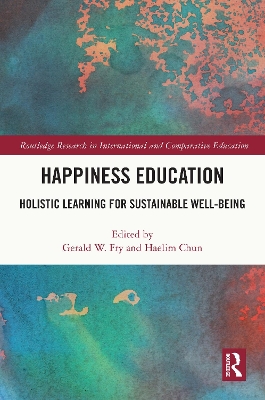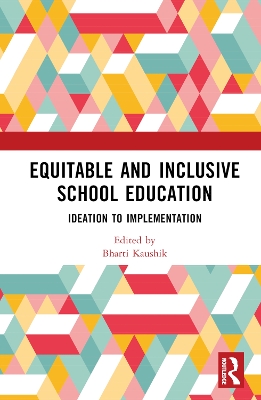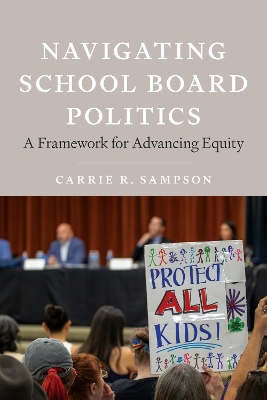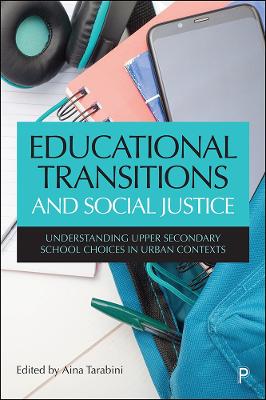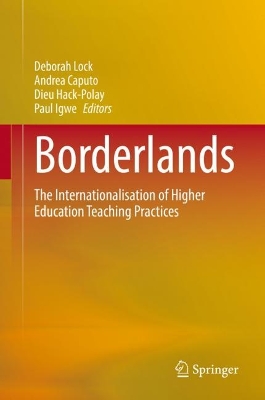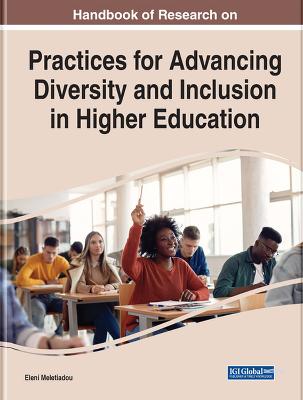Global Classroom
 portes grátis
portes grátis
Global Classroom
Multicultural Approaches and Organizational Strategies in Teaching and Learning Business and Economics
Gennaro, Davide de; Marino, Marco
Emerald Publishing Limited
10/2024
172
Dura
9781835492857
15 a 20 dias
Descrição não disponível.
Introduction: The landscape of modern higher education in business and economics; Matthew C. Rousu
Section I. Understanding the global business classroom
Chapter 1. Becoming culture, transmitting culture; Aneta Chybicka and Andrzej Piotrowski
Chapter 2. Culture and its impact on learning; Shima Mirzaei
Chapter 3. Varied educational backgrounds: Learner aspirations, active instruction and classroom expectations; Joanna Simos
Chapter 4. The landscape of global business higher education; Jan Klakurka and Candice Chow
Section II. Challenges and strategies for success
Chapter 5. Between multiculturalism and multilingualism: Educational challenges in contemporary societies; Vincenzo Basile and Clelia Cascella
Chapter 6. Ethnocentric curricula and western-centric methodologies; Inaki Perez-Ibanez
Chapter 7. Effective communication techniques for a diverse student body; Carol Del Vitto
Chapter 8. Strategies for engaging a multicultural classroom; Ingrid S. Greene
Section III. So in the classroom, so in the workplace: managerial perspective and the role of HRM
Chapter 9. Diversity and inclusion: From classroom discussion to corporate policies; Floriana Pollio and Filomena Riemma
Chapter 10. Managing workforce diversity with AI-based HRM; Viviana Colombi Evangelista and Ludovica Del Barone
Chapter 11. How HR interacts with and influences Diversity, Equity and Inclusion; Charles J. Priolo
Section IV. Technology bringing distant worlds closer
Chapter 12. Leveraging technologies for inclusion: Insights on higher education organizations; Eleonora Veglianti and Luisa Varriale
Chapter 13. The virtual global classroom; Paola Cascinelli
Chapter 14. The evolving landscape of AI in higher education; Lynne Bowker
Chapter 15. Unlocking the wealth of cultures with technology; John D. Branch and Amy Gillett
Section V. Real-world applications
Chapter 16. Training and skills development in business: The case of the Sant'Anna Institute; Marco Marino and Davide de Gennaro
Chapter 17. The role of avatars in enhancing cultural diversity and classroom dynamics in education; Bice Della Piana, Sara Carbone, Francesco Di Vincenzo, and Chiara Signore
Chapter 18. Enriching student learning experiences and global awareness through inclusive intensive abroad course: A case study (abridged) of Strategy in the European Context; Jan Klakurka and Candice Chow
Chapter 19. Promoting equality through ethical AI and DEI principles: A case study of the LSST; Emilia D'Avino, Davide de Gennaro, Laura Inno, and Giulia Vicentini
Chapter 20. Language barriers and communication hurdles at the University of Rhode Island; Sigrid Berka and Donna Gamashe-Griffiths
Section VI. Conclusions and recommendations toward a more inclusive future
Chapter 21. Policy recommendations and institutional changes; Harika Rao
Section I. Understanding the global business classroom
Chapter 1. Becoming culture, transmitting culture; Aneta Chybicka and Andrzej Piotrowski
Chapter 2. Culture and its impact on learning; Shima Mirzaei
Chapter 3. Varied educational backgrounds: Learner aspirations, active instruction and classroom expectations; Joanna Simos
Chapter 4. The landscape of global business higher education; Jan Klakurka and Candice Chow
Section II. Challenges and strategies for success
Chapter 5. Between multiculturalism and multilingualism: Educational challenges in contemporary societies; Vincenzo Basile and Clelia Cascella
Chapter 6. Ethnocentric curricula and western-centric methodologies; Inaki Perez-Ibanez
Chapter 7. Effective communication techniques for a diverse student body; Carol Del Vitto
Chapter 8. Strategies for engaging a multicultural classroom; Ingrid S. Greene
Section III. So in the classroom, so in the workplace: managerial perspective and the role of HRM
Chapter 9. Diversity and inclusion: From classroom discussion to corporate policies; Floriana Pollio and Filomena Riemma
Chapter 10. Managing workforce diversity with AI-based HRM; Viviana Colombi Evangelista and Ludovica Del Barone
Chapter 11. How HR interacts with and influences Diversity, Equity and Inclusion; Charles J. Priolo
Section IV. Technology bringing distant worlds closer
Chapter 12. Leveraging technologies for inclusion: Insights on higher education organizations; Eleonora Veglianti and Luisa Varriale
Chapter 13. The virtual global classroom; Paola Cascinelli
Chapter 14. The evolving landscape of AI in higher education; Lynne Bowker
Chapter 15. Unlocking the wealth of cultures with technology; John D. Branch and Amy Gillett
Section V. Real-world applications
Chapter 16. Training and skills development in business: The case of the Sant'Anna Institute; Marco Marino and Davide de Gennaro
Chapter 17. The role of avatars in enhancing cultural diversity and classroom dynamics in education; Bice Della Piana, Sara Carbone, Francesco Di Vincenzo, and Chiara Signore
Chapter 18. Enriching student learning experiences and global awareness through inclusive intensive abroad course: A case study (abridged) of Strategy in the European Context; Jan Klakurka and Candice Chow
Chapter 19. Promoting equality through ethical AI and DEI principles: A case study of the LSST; Emilia D'Avino, Davide de Gennaro, Laura Inno, and Giulia Vicentini
Chapter 20. Language barriers and communication hurdles at the University of Rhode Island; Sigrid Berka and Donna Gamashe-Griffiths
Section VI. Conclusions and recommendations toward a more inclusive future
Chapter 21. Policy recommendations and institutional changes; Harika Rao
Este título pertence ao(s) assunto(s) indicados(s). Para ver outros títulos clique no assunto desejado.
Higher Education; Business Education; Diverse Learning; Cross Cultural Learning; Inclusive Curricula; Globalisation; Intercultural Communication
Introduction: The landscape of modern higher education in business and economics; Matthew C. Rousu
Section I. Understanding the global business classroom
Chapter 1. Becoming culture, transmitting culture; Aneta Chybicka and Andrzej Piotrowski
Chapter 2. Culture and its impact on learning; Shima Mirzaei
Chapter 3. Varied educational backgrounds: Learner aspirations, active instruction and classroom expectations; Joanna Simos
Chapter 4. The landscape of global business higher education; Jan Klakurka and Candice Chow
Section II. Challenges and strategies for success
Chapter 5. Between multiculturalism and multilingualism: Educational challenges in contemporary societies; Vincenzo Basile and Clelia Cascella
Chapter 6. Ethnocentric curricula and western-centric methodologies; Inaki Perez-Ibanez
Chapter 7. Effective communication techniques for a diverse student body; Carol Del Vitto
Chapter 8. Strategies for engaging a multicultural classroom; Ingrid S. Greene
Section III. So in the classroom, so in the workplace: managerial perspective and the role of HRM
Chapter 9. Diversity and inclusion: From classroom discussion to corporate policies; Floriana Pollio and Filomena Riemma
Chapter 10. Managing workforce diversity with AI-based HRM; Viviana Colombi Evangelista and Ludovica Del Barone
Chapter 11. How HR interacts with and influences Diversity, Equity and Inclusion; Charles J. Priolo
Section IV. Technology bringing distant worlds closer
Chapter 12. Leveraging technologies for inclusion: Insights on higher education organizations; Eleonora Veglianti and Luisa Varriale
Chapter 13. The virtual global classroom; Paola Cascinelli
Chapter 14. The evolving landscape of AI in higher education; Lynne Bowker
Chapter 15. Unlocking the wealth of cultures with technology; John D. Branch and Amy Gillett
Section V. Real-world applications
Chapter 16. Training and skills development in business: The case of the Sant'Anna Institute; Marco Marino and Davide de Gennaro
Chapter 17. The role of avatars in enhancing cultural diversity and classroom dynamics in education; Bice Della Piana, Sara Carbone, Francesco Di Vincenzo, and Chiara Signore
Chapter 18. Enriching student learning experiences and global awareness through inclusive intensive abroad course: A case study (abridged) of Strategy in the European Context; Jan Klakurka and Candice Chow
Chapter 19. Promoting equality through ethical AI and DEI principles: A case study of the LSST; Emilia D'Avino, Davide de Gennaro, Laura Inno, and Giulia Vicentini
Chapter 20. Language barriers and communication hurdles at the University of Rhode Island; Sigrid Berka and Donna Gamashe-Griffiths
Section VI. Conclusions and recommendations toward a more inclusive future
Chapter 21. Policy recommendations and institutional changes; Harika Rao
Section I. Understanding the global business classroom
Chapter 1. Becoming culture, transmitting culture; Aneta Chybicka and Andrzej Piotrowski
Chapter 2. Culture and its impact on learning; Shima Mirzaei
Chapter 3. Varied educational backgrounds: Learner aspirations, active instruction and classroom expectations; Joanna Simos
Chapter 4. The landscape of global business higher education; Jan Klakurka and Candice Chow
Section II. Challenges and strategies for success
Chapter 5. Between multiculturalism and multilingualism: Educational challenges in contemporary societies; Vincenzo Basile and Clelia Cascella
Chapter 6. Ethnocentric curricula and western-centric methodologies; Inaki Perez-Ibanez
Chapter 7. Effective communication techniques for a diverse student body; Carol Del Vitto
Chapter 8. Strategies for engaging a multicultural classroom; Ingrid S. Greene
Section III. So in the classroom, so in the workplace: managerial perspective and the role of HRM
Chapter 9. Diversity and inclusion: From classroom discussion to corporate policies; Floriana Pollio and Filomena Riemma
Chapter 10. Managing workforce diversity with AI-based HRM; Viviana Colombi Evangelista and Ludovica Del Barone
Chapter 11. How HR interacts with and influences Diversity, Equity and Inclusion; Charles J. Priolo
Section IV. Technology bringing distant worlds closer
Chapter 12. Leveraging technologies for inclusion: Insights on higher education organizations; Eleonora Veglianti and Luisa Varriale
Chapter 13. The virtual global classroom; Paola Cascinelli
Chapter 14. The evolving landscape of AI in higher education; Lynne Bowker
Chapter 15. Unlocking the wealth of cultures with technology; John D. Branch and Amy Gillett
Section V. Real-world applications
Chapter 16. Training and skills development in business: The case of the Sant'Anna Institute; Marco Marino and Davide de Gennaro
Chapter 17. The role of avatars in enhancing cultural diversity and classroom dynamics in education; Bice Della Piana, Sara Carbone, Francesco Di Vincenzo, and Chiara Signore
Chapter 18. Enriching student learning experiences and global awareness through inclusive intensive abroad course: A case study (abridged) of Strategy in the European Context; Jan Klakurka and Candice Chow
Chapter 19. Promoting equality through ethical AI and DEI principles: A case study of the LSST; Emilia D'Avino, Davide de Gennaro, Laura Inno, and Giulia Vicentini
Chapter 20. Language barriers and communication hurdles at the University of Rhode Island; Sigrid Berka and Donna Gamashe-Griffiths
Section VI. Conclusions and recommendations toward a more inclusive future
Chapter 21. Policy recommendations and institutional changes; Harika Rao
Este título pertence ao(s) assunto(s) indicados(s). Para ver outros títulos clique no assunto desejado.

